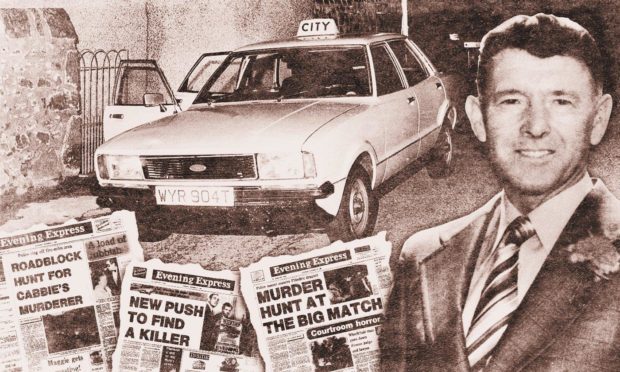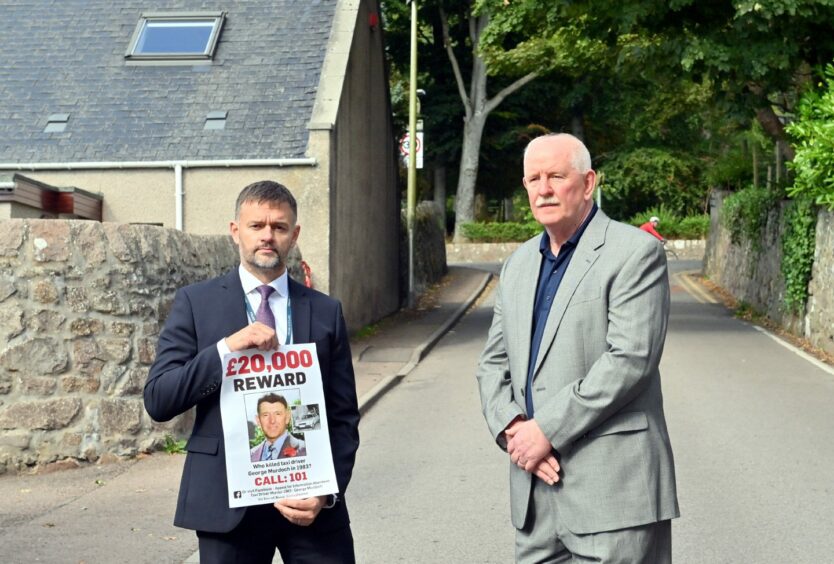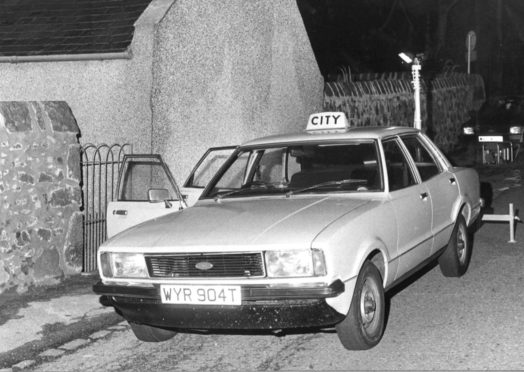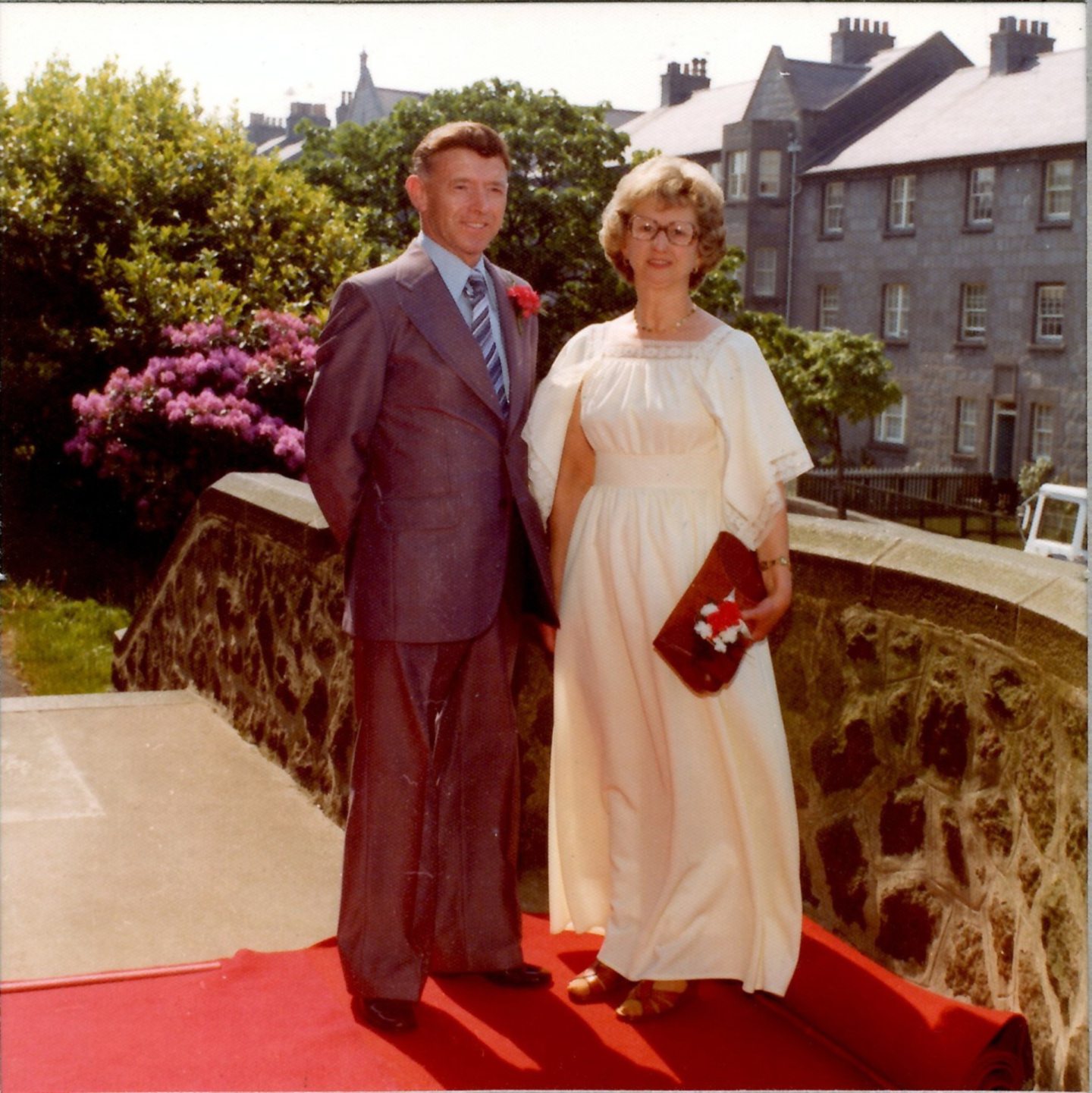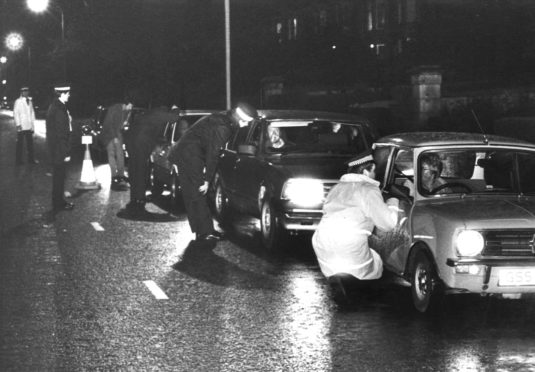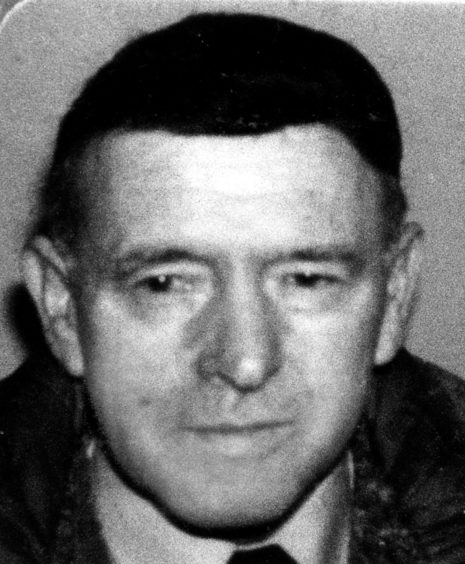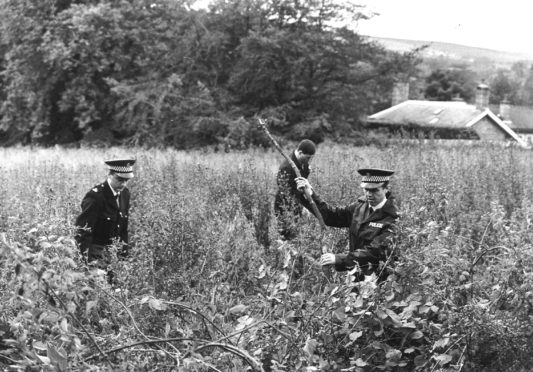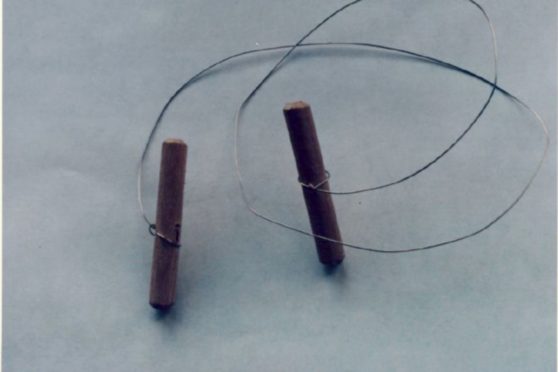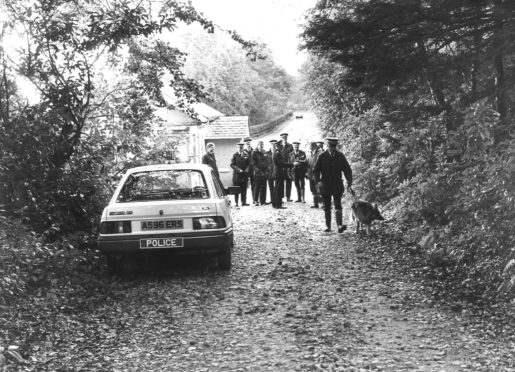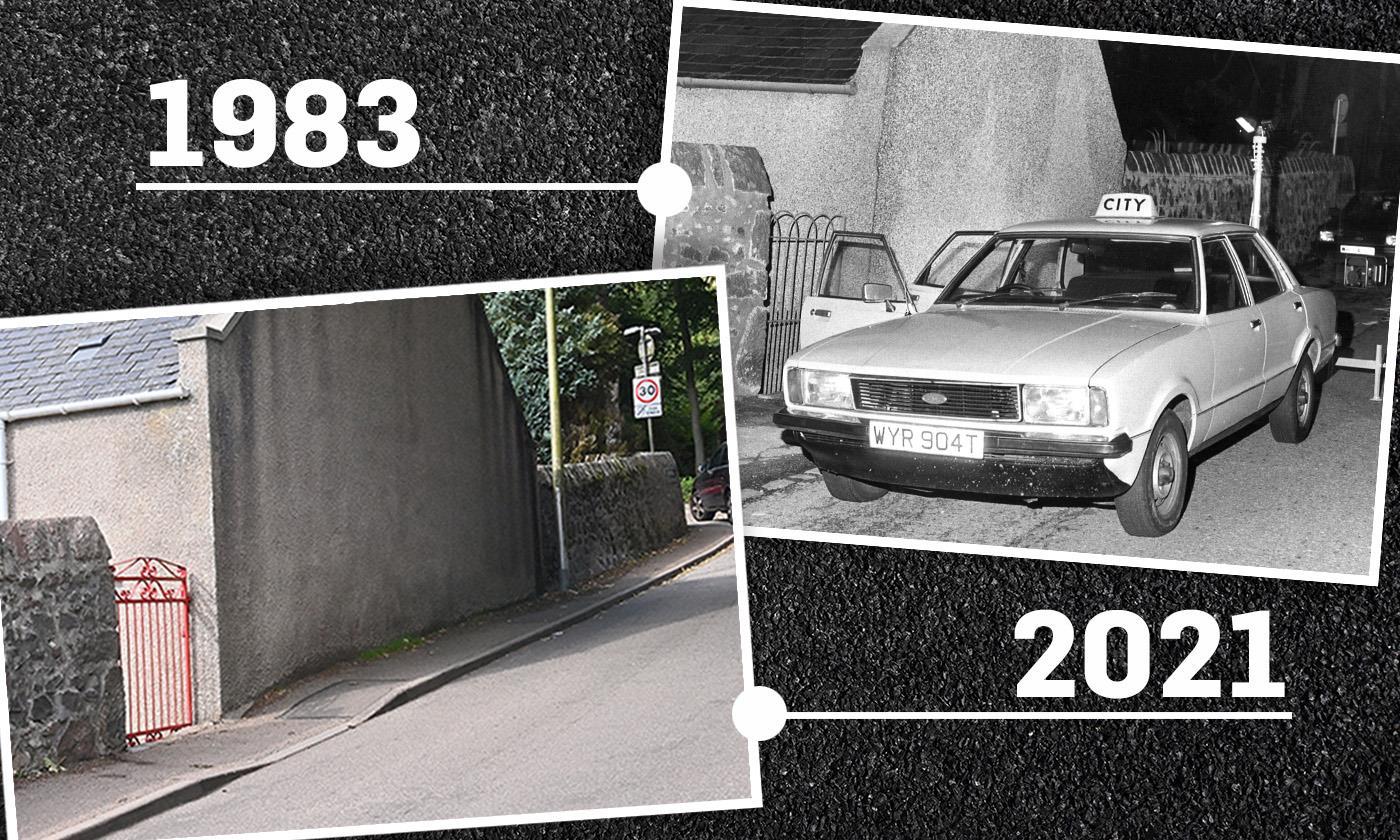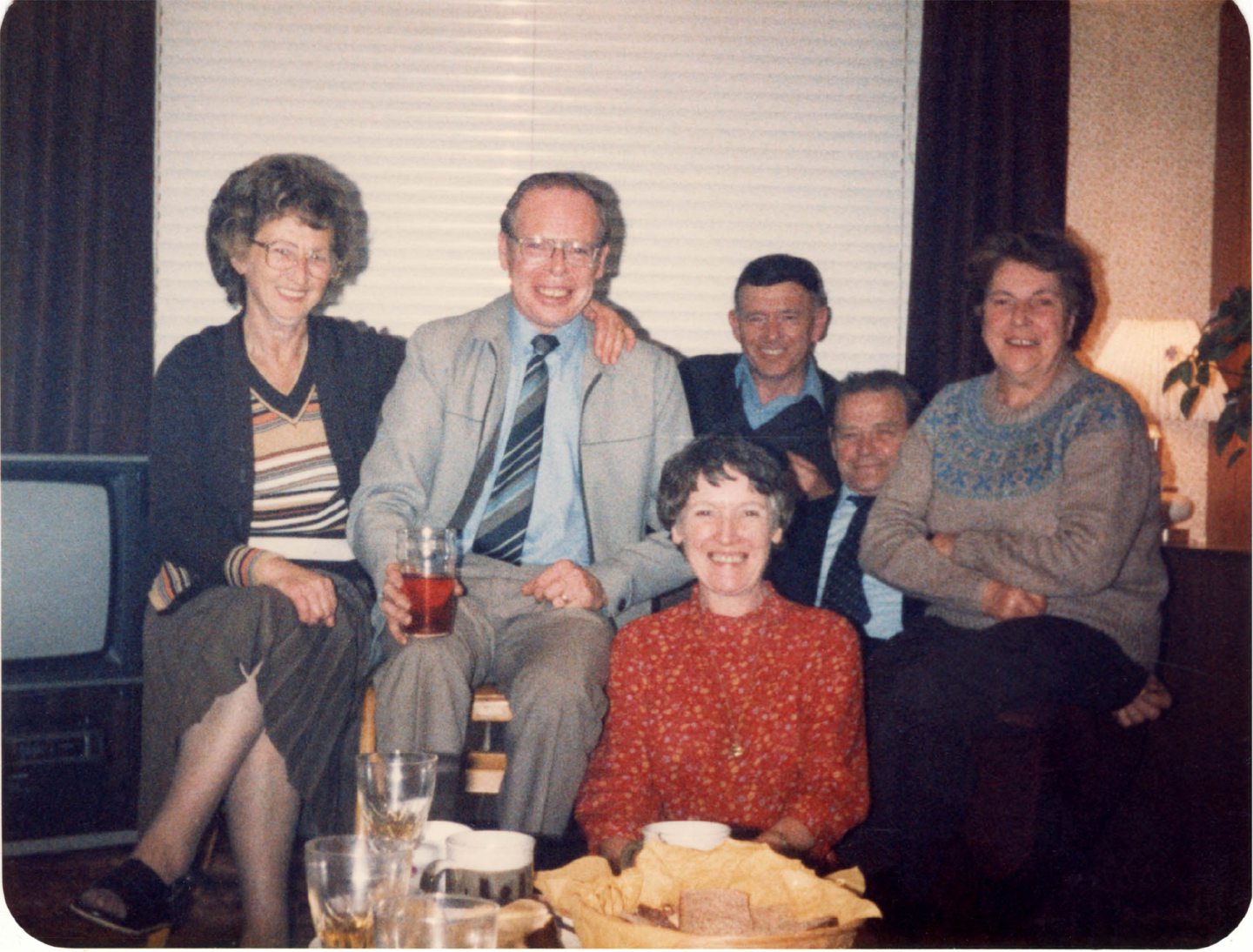The family of murdered Aberdeen taxi driver George Murdoch today made a fresh plea for information after the Press & Journal and Evening Express doubled the reward to find the so-called Cheese Wire Killer.
George’s brutal murder shocked the country nearly 40 years ago but his killer has never been traced.
Now, on the 38th anniversary of his death, the Press & Journal and Evening Express have increased the reward to £20,000 for anyone with information leading to the confirmed identification of the killer.
George, 58, was found dying on the ground outside his sky blue Ford Cortina taxi on Pitfodels Station Road in having picked up a fare on the city’s Queen’s Road.
George told his dispatcher at 8.35pm he was heading towards Peterculter, but he never arrived at his destination.
Just 10 minutes later witnesses saw a man struggling with George on the secluded street, just off North Deeside Road, and raised the alarm.
When a police officer arrived George was close to death and a key piece of evidence was found nearby – a cheese wire. This would lead to the murderer being dubbed the Cheese Wire Killer.
In the aftermath of the murder, police investigated various sightings of men matching the description of the suspect – aged between 20-30 years old, with dark hair and wearing dark clothes.
But despite the massive manhunt – one of the largest in north-east history – no one has been charged.
The murder had a devastating impact on George’s family and his widow Jessie died in 2004 without seeing justice.
Increased reward could be a ‘game-changer’
George’s nephew Alex McKay, along with his wife Robina, have continued the search for answers since then and are hopeful that the increased reward will spark a breakthrough in the case.
Alex said: “As time moves on and, despite significant efforts by the police and others, we are still searching for that one elusive piece of information to solve this case.
“Now though, due to the unexpected and overwhelmingly generous gesture made by Aberdeen Journals, the reward now stands at £20,000.
“This really could be a game-changer and might just produce that vital tip needed to bring closure.
“We have always felt very strongly that there are people still out there who can put a name to the killer, or who may have information which they have been holding on to all these years, but may not know just how important it is.
“The police can solve this case, but they need the critical information to do so and that is still out there.”
Police believe mystery can be solved
Detective Inspector James Callander said the doubling of the reward money for information is “hugely encouraging” for the ongoing search for the killer.
He said the investigation into George’s murder has been one of the largest ever conducted in the north-east.
He said: “We’ve got a catalogue of archive material. In excess of 10,000 houses were visited and 8,000 witness statements were taken. We firmly believe the answers are contained within there.
“This reward will maybe help somebody to come forward and put that little piece together that will hopefully get this over the line.”
The detective inspector said Grampian Police at the time carried out a “really thorough inquiry” in 1983, and that “the kitchen sink was thrown at this, so to speak”.
Developments in DNA technology is also something being strongly considered by the police, as investigators have a “whole host of items” kept from the 1983 killing, including the cheese wire itself.
“It’s always a hope of ours – advances in DNA are happening all the time,” said Det Insp Callander.
“We have to take the expert knowledge from our forensic guys and what we do with that.
“Certainly it would be a huge hope for us that we could get something forensically to get this murder solved.”
When asked how useful the DNA evidence currently in possession by the police is, the detective inspector said: “If we had useful DNA, it would have been solved by now, let’s put it that way.
“But we’re still hopeful. Advances in technology and the way we can extract DNA and examine it is changing all the time, so that’s something we’re looking at constantly.”
‘Come forward, let us know’
Det Insp Callander urged anyone who has not come forward in the years since 1983 to get in touch, no matter how irrelevant they might think it is.
He added: “They might have had allegiances they don’t have now, people may have passed away. Come forward, let us know.
“It might just ease their mind for us to go back and say thank you very much, we’ve looked into that and it’s not relevant, but at the same time it might be the little thing that we need to get it over the line.
“So a reward is hugely encouraging for us, and supported by the family as well.”
As well as the option to contact police on 101 with any information, people can also message tips to a new Facebook page dedicated to the case.
A case that lives in the memory
The passage of time has not dampened interest in the case from people around the north-east.
Alex said: “This was a random case of murder. It could have happened to any taxi driver, but George Murdoch happened to be the unfortunate driver who came within the path of the killer that night.
“Most decent folk can imagine how they’d feel if this happened to one of their own.
“George’s widow Jessie did more than imagine. She had to live that nightmare and it impacted her life in ways none of us could ever imagine.”
“Although a difficult case, this can be solved, but only if the police receive the right information. We urge you not to keep silent any longer, call the police, or private message Facebook and your information will be passed on.”
Why did killer use a cheese wire?
Although it was thought the cheese wire was used in the attack, it wasn’t officially confirmed by police until 2018.
It is an item that is central to the case, and was fairly distinctive. An image of an identical cheese wire shows it was not perhaps an item that would be in everyday household use.
In particular, at the time cheese wires were used for many tasks in different industries. Some of the uses they had included cutting clay in sculpting/artwork – which could be relevant because Gray’s School of Art is close to where George was killed – and for cutting cores offshore.
They were also used in the farming sector for dehorning cattle, and in the fishing industry for cutting large blocks of ice.
Alex said: “In 1983, did anyone know an individual, male, approx 20-30yrs of age, dark hair, worn over the ears, who may have used a cheese wire at work, or who carried one with him for other purposes?
“Perhaps they lived anywhere between Aberdeen and Culter, or Garthdee area. They may have been quick to anger, or controlling.
“When you piece these things together does a picture emerge of anyone you know, or knew like this back then?”
Det Insp Callander added: “If you were going to commit a robbery, why would you take a cheese wire with you? You would take a knife.
“So it probably leads us to believe the cheese wire was in use by that person for some other reason than to commit crime or commit this brutal murder.”
Why did taxi stop at quiet, lonely spot?
Officers carried out high-profile inquiries into the murder including stopping and inspecting the hands of Pittodrie visitors at a Dons match to see if they had any injuries that could indicate they were the killer.
There have also been many theories about who was responsible, including that whoever murdered George had visited the Mr Chips takeaway in Mannofield shortly after the killing.
Staff at the fish and chop shop, around a mile away from the scene, reported that a man, bleeding from his hands and face, had ordered a fish supper soon after the murder. However, the report was not made until 17 days after the incident.
Det Insp Callander said the Mr Chips sighting “cannot be ruled out” as useful information, but inquiries at the time did not result in any major breakthroughs.
He said: “It’s probably something you would look at and think: would somebody who has just committed such a brutal attack go to a fish and chip shop and buy fish and chips? Possibly. We don’t know.
“This information came in some three weeks after the event, as a result of that an extensive house-to-house was done round about Mr Chips, but obviously to date we never identified that person.
“Was that him, was it not him? It’s difficult to say.”
While the case has many unanswered questions, one of the more puzzling aspects is where George’s taxi stopped.
Alex said: “Why did George’s taxi come to a stop at the top of Pitfodels Station Road? A quiet, lonely, dark spot. Did his killer have local knowledge of that area? Did he choose that place, guessing he’d be unlikely to be disturbed?
“It’s a road which could easily be missed, heading west from Aberdeen, making it possible that it was one the killer was familiar with. If the killer had wanted to go to Culter, as he’d told the driver, did he live out that way, or somewhere in between? Garthdee lies close to the bottom of Pitfodels Station Road.
“Did he live there? Could that have been why he slipped away so easily and quickly after the murder?”
What you know could be the missing link
Every second counts in a murder investigation, and for those left behind every moment without a loved one is tinged with sadness.
Alex said: “After 38 years, the memory of George’s smiling, kindly face still lingers.
“That’s how he’d have looked as he stopped to pick up his fare. In sharp contrast to how his killer had left him, bleeding and dying by the roadside.
“Images of his brutal murder as well as the heartbreaking impact this had on his wife will never leave us. The family still possess an overwhelming urge and desire to see justice obtained for George.”
Det Insp Callander urged anyone with information about the killing to come forward: “It might be totally insignificant to them, or they think it’s insignificant, but it may well be that little bit of information we need.”
Can you finally solve the mystery? Call Police Scotland on 101 with any information or private message the new George Murdoch Murder Facebook page
Day by day: How the first weeks of the manhunt to find cheese wire killer unfolded
